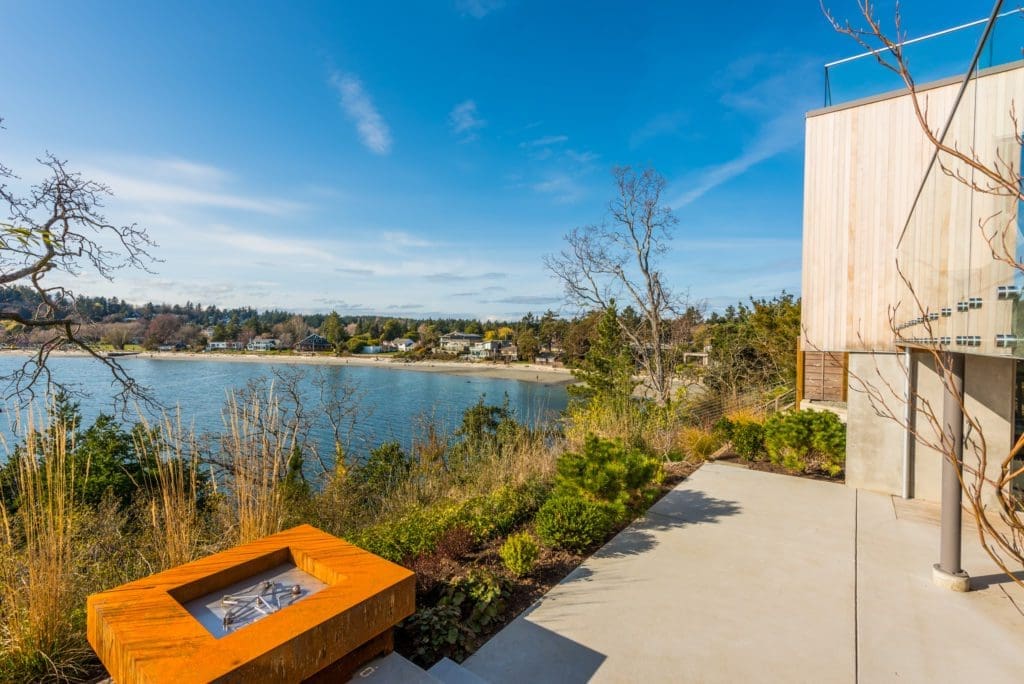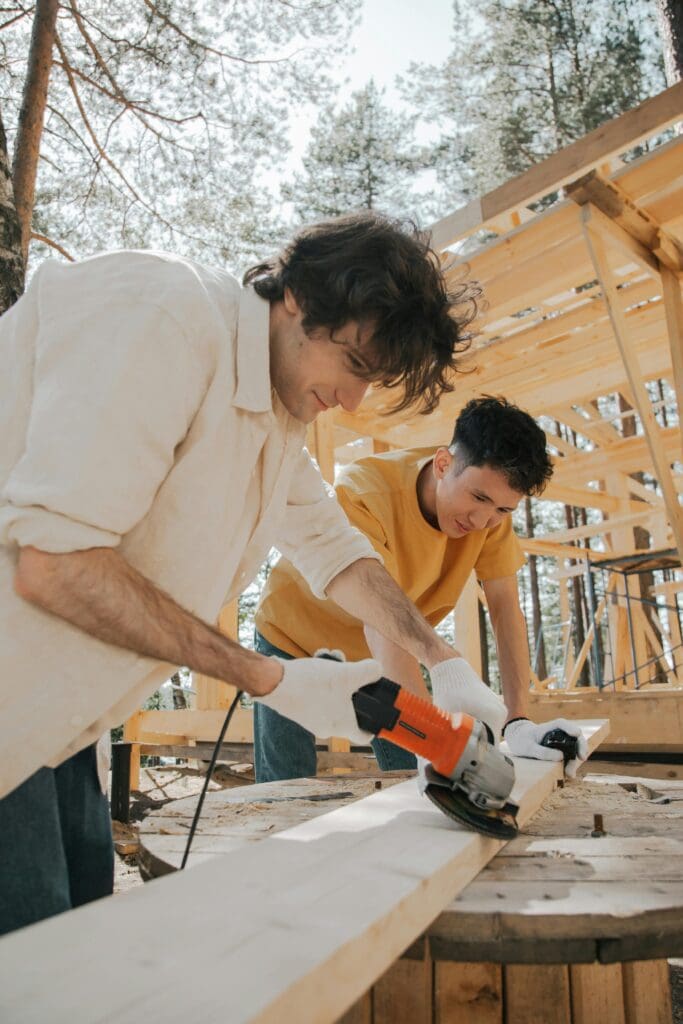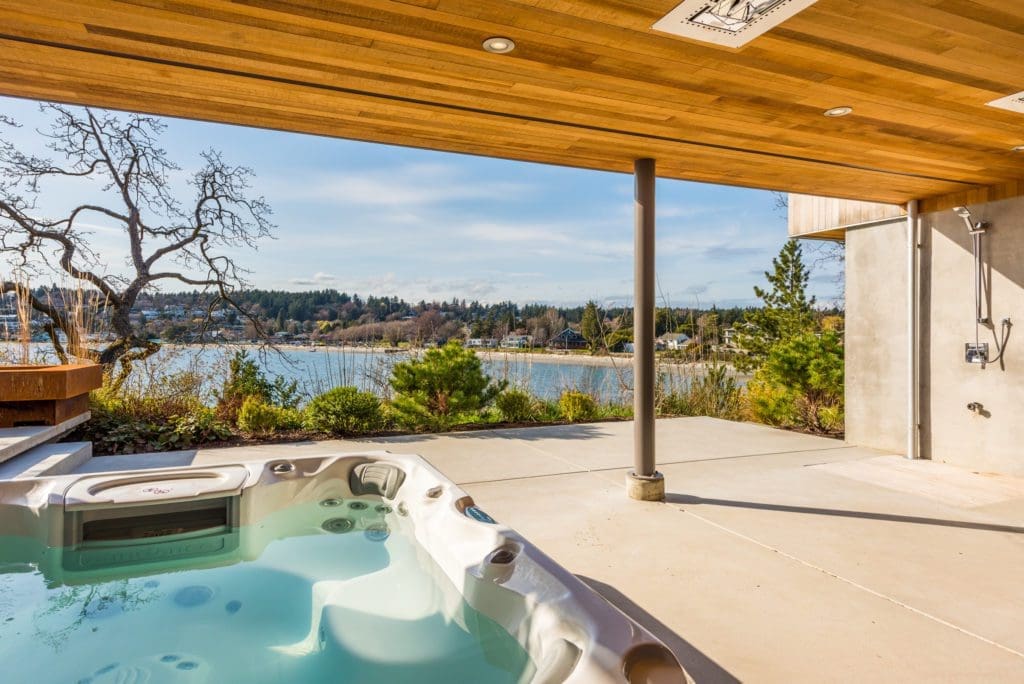Introduction
Embarking on the custom home-building experience is a venture filled with potential and excitement. More than any other form of home acquisition, this process offers a unique opportunity to tailor every aspect of your home to your tastes and lifestyle needs.
Vancouver Island, with its stunning landscapes and diverse architectural heritage, provides a picturesque backdrop for constructing a home that is not just a dwelling but a reflection of your dreams and aspirations.
Building a custom home requires more than just financial investment; it involves a deep commitment to bringing your vision to life through careful planning and meticulous execution.
Whether you dream of a modern urban residence or a tranquil coastal retreat, the journey from a mere concept to a physical structure is a complex yet gratifying experience.
This guide will help you navigate the multifaceted stages of home construction in Victoria, shedding light on the intricacies of the process and providing essential insights to make informed decisions.
In Victoria’s dynamic real estate landscape, custom home building stands out as a path to create something unique. The process allows you to infuse your personal touch in every element of your home – from the foundation to the rooftop, the interior layout to the exterior aesthetics.
Moreover, building in the Cowichan Valley has local considerations, such as environmental sustainability, adherence to regional building codes, and harmonizing your design with the local climate and topography.
This guide aims to empower you with knowledge and confidence as you embark on this rewarding journey. By understanding the key phases of home construction, from initial planning and land selection to design, building, and final touches, you will be well-equipped to oversee the creation of a home that meets your functional needs and resonates with your style and values.
Selecting the Land for Your Custom Home

Choosing a suitable parcel of land is a pivotal decision in the custom home-building process, especially in a region as diverse as Victoria.
The land you select sets the foundation for your home’s construction and influences its design, functionality, and overall harmony with the surroundings.
Here are key considerations to keep in mind when selecting land from Victoria to Duncan:
Location and Environment
Victoria's varied landscapes offer a range of choices, from urban settings to coastal areas and rural countryside.
Consider how the environment aligns with your lifestyle. Do you prefer the city's vibrancy, the beach's tranquillity, or areas more serene - like Shawnigan Lake or Maple Bay? Each setting offers unique advantages and potential constraints.
Topography and Natural Features
The physical characteristics of the land can significantly affect the design and cost of construction. A sloped lot may offer stunning views but require additional engineering and landscaping efforts.
Similarly, natural features like trees, water bodies, or rock formations can influence your home's layout and integration with the natural environment.
Access to Utilities and Infrastructure
Access to essential utilities such as water, electricity, gas, and sewage systems is crucial. Rural or undeveloped areas might require additional investment to connect these services.
Also, consider the availability of roads and public transport, especially if you prefer a location outside urban areas.
Local Regulations and Building Codes
Each area from Victoria to Duncan may have specific zoning laws and building codes that can impact your construction. Restrictions on building size, height, and even architectural style are not uncommon.
Researching these regulations thoroughly or consulting with local authorities is essential to ensure compliance.
Future Development Plans
Investigate any planned developments or changes in land use in the area.
Future developments can affect your property's value and quality of life, whether it's new infrastructure, commercial developments, or other residential projects.
Community and Neighbourhood
The community surrounding your land can significantly impact your living experience. Consider the neighbourhood's character, demographics, and amenities.
Are there schools, parks, or shopping centers nearby? Is the community's atmosphere in line with your preferences?
Long-Term Considerations
Consider the potential long-term changes in your life and how they might influence your needs. This could include family expansion, accessibility for aging in place, or even the property's potential resale value.
Selecting land in on Southern Vancouver Island for your custom home is more than just finding a beautiful spot; it’s about strategically influencing your home’s design, functionality, and overall satisfaction with your living environment.
Take the time to research, visit potential sites, and consider all aspects that will make your custom home where you can thrive.
Assembling Your Build Team and Monitoring the Process

Assembling the right team for building your custom home in Victoria is a crucial step that can significantly influence the success of your project. This team, comprising architects, builders, contractors, and specialists, will turn your vision into reality.
Here are essential steps and considerations for assembling your team and effectively monitoring the construction process:
- Choosing the Right Professionals:
- Architects and Designers: Look for professionals with experience in designing homes in Victoria that match your preferred style and who are knowledgeable about local building codes and environmental considerations.
- Builders and Contractors: Choose builders in Victoria with a solid reputation for quality workmanship and reliability. Check their previous projects and client reviews, and ensure they are licensed and insured.
- Specialists: Depending on your project, you may need other specialists like landscape architects, interior designers, or sustainability consultants. Their expertise can add significant value to your home.
- Conducting Interviews and Reviews:
- Meet potential team members to discuss your vision, budget, and timeline.
- Ask for references and portfolios of their previous work, particularly projects similar to yours.
- Discuss their approach to project management, communication, and problem-solving.
- Establishing Clear Communication:
- Set up regular meetings and check-ins to stay updated on the progress.
- Utilize project management tools or software for better coordination and tracking if available.
- Ensure there’s a single point of contact for ease of communication and decision-making.
- Understanding Contracts and Agreements:
- Review contracts carefully with each team member, ensuring clarity on roles, responsibilities, timelines, and payment schedules.
- Consider having a legal professional review contract to ensure your interests are protected.
- Monitoring the Construction Process:
- Regular site visits are essential for monitoring progress and ensuring quality.
- Be prepared to make decisions and provide feedback promptly to avoid delays.
- Keep track of the budget and timeline, and immediately discuss any deviations with your team.
- Handling Changes and Challenges:
- Be flexible and prepared for unexpected challenges, a common aspect of custom home building.
- Work collaboratively with your team to find solutions and make necessary adjustments.
- Keep detailed records of changes in plans, agreements, or costs for reference.
- Staying Informed and Involved:
- Educate yourself about the construction process to understand the progress and any technical aspects discussed.
- Trust your team and verify that work is being done per agreed standards and plans.
Assembling and managing a build team requires careful consideration, effective communication, and active involvement.
Choosing the right professionals and staying engaged throughout the process ensures that your custom home is built to your specifications, within budget, and on time.
Key Considerations When Designing Your Custom Home
Designing a custom home in Cowichan allows you to create your space uniquely, reflecting your style and meeting your specific needs.
Several key considerations will guide the design process to ensure your home is beautiful and functional.
- Architectural Style and Aesthetics:
- Harmonizing with the Locale: Victoria’s diverse architectural styles range from historic Victorian to modern contemporary. Consider how your home’s design will complement the surrounding area.
- Personal Style Preferences: Whether you prefer a minimalist modern design or a more traditional look, your home should reflect your aesthetic.
- Functionality and Space Planning:
- Layout: Think about how you’ll use each space. Open floor plans are popular for their flow and versatility, while separate rooms can offer privacy and quiet.
- Future Needs: Design with the future in mind. Consider elements like accessibility, potential family expansion, and multi-functional spaces.
- Sustainability and Energy Efficiency:
- Eco-Friendly Materials: Using sustainable materials not only benefits the environment but can also enhance the efficiency and longevity of your home.
- Energy Considerations: Incorporate solar panels, energy-efficient windows, and proper insulation to reduce your ecological footprint and save energy costs.
- Lighting and Ventilation:
- Natural Light: Maximizing natural light can improve the ambiance of your home and reduce energy consumption. Consider the placement and size of windows.
- Ventilation: Good airflow is essential for comfort and health. Design your home to encourage natural ventilation, and consider integrating a high-quality HVAC system.
Integration with the
- Outdoor Environment:
- Outdoor Living Spaces: Patios, decks, and gardens extend your living space and allow you to enjoy Victoria’s natural beauty.
Landscaping: Thoughtful landscaping can enhance your home’s aesthetics, provide privacy, and improve energy efficiency.
- Outdoor Living Spaces: Patios, decks, and gardens extend your living space and allow you to enjoy Victoria’s natural beauty.
- Local Building Codes and Regulations:
- Compliance: Ensure your home design adheres to Victoria and the area’s local building codes and regulations. This includes structural safety, zoning laws, and environmental regulations.
- Permitting Process: Understand the permitting process in Victoria to ensure your project stays on track without legal hurdles.
- Interior Design Elements:
- Aesthetic Details: Choose finishes, colours, and fixtures that align with your overall design theme.
- Functional Features: Consider the practicality of your choices, including storage solutions, durable materials for high-traffic areas, and user-friendly layouts.
Designing your custom home in Victoria is a complex but rewarding process that combines aesthetics, functionality, and sustainability. Considering these essential elements, you can ensure your home looks like you’ve dreamed and serves your needs for years.
Building and Quality Assurance

In the building phase, your custom home in Victoria materializes from plans and designs into a tangible structure.
Quality assurance throughout this phase is crucial to ensure the finished home meets your expectations and adheres to the highest standards.
- Construction Management:
- Effective Project Management: A competent project manager is key to coordinating the various aspects of construction, from scheduling to resource allocation.
- Regular Progress Meetings: Schedule consistent meetings with your build team to discuss progress, address any issues, and make timely decisions.
- Quality Control Measures:
- Regular Inspections: Conduct regular inspections at different stages of construction to ensure work is proceeding as planned and meets quality standards.
- Hiring Independent Inspectors: Consider hiring third-party inspectors for unbiased assessments of critical construction stages.
- Adherence to Building Codes and Standards:
- Local Regulations: Ensure all construction work complies with Victoria’s building codes and regulations, focusing on safety and structural integrity.
- Red-Seal Certification Standards: Red-Seal standards in trades ensure high-quality workmanship and technical proficiency.
- Materials and Workmanship:
- High-Quality Materials: Use quality materials that offer durability and aesthetic appeal. This is particularly important in Victoria’s variable climate.
- Skilled Tradespeople: Employ tradespeople with a proven track record of excellence in their respective fields.
- Addressing and Resolving Challenges:
- Problem-Solving Approach: Stay solution-focused when challenges arise, whether related to weather, materials, or unforeseen site conditions.
- Flexibility and Adaptability: Be prepared to adjust the plan if necessary while keeping an eye on the overall vision and budget.
- Environmental Considerations:
- Waste Management: Implement effective waste management practices to minimize environmental impact.
- Eco-Friendly Construction Practices: Use sustainable construction methods where possible to reduce the carbon footprint of your building process.
- Communication and Transparency:
- Clear Communication: Maintain open lines of communication with your team, ensuring everyone is aware of expectations and changes.
- Documentation: Keep detailed records of construction progress, including changes, approvals, and expenditures.
Finalizing Your Custom Home

The final stage of building your custom home in Victoria is a critical phase where all the elements of your project come together.
This stage involves thorough inspections, addressing finishing touches, and ensuring that every aspect of the home meets your standards and expectations.
Completion Inspections
- Pre-Occupancy Inspection: Conduct a comprehensive inspection before moving in. This includes checking for incomplete work, defects, or areas not meeting the agreed specifications.
- Professional Inspections: Hiring a professional inspector can provide an objective assessment of the home's condition, including structural elements, electrical systems, plumbing, and finishes.
Obtaining Certificates and Final Approvals
- Occupancy Certificate: In Victoria, obtaining an occupancy certificate is essential. It indicates that the home is safe and meets all the building and health standards.
- Finalizing Permits: Ensure that all construction permits are closed and finalized with the local authorities, confirming that all work has been completed according to the code.
Addressing Snag Lists:
- Identifying Snags: A snag list includes minor issues, unfinished tasks, or cosmetic defects. Identify these items during your walkthroughs.
- Resolving Issues: Work with your builder to have these items addressed promptly. Set clear timelines for when these fixes should be completed.
Reviewing Warranty and Maintenance Information:
- Builder's Warranty: Understand the warranty provided by your builder, including what is covered and for how long.
- Maintenance Guidelines: Review any maintenance guidelines for the home's various systems and finishes to ensure longevity and optimal performance.
Moving In and Settling Down:
- Planning the Move: Organize and plan the move into your new home, considering logistics like furniture placement and utility setup.
- Adjustment Period: Allow yourself time to settle in and adjust to the new space. It's common to notice small details that may require adjustments once you start living in the home.
Post-Construction Support:
- Builder Follow-Up: Some builders in Victoria offer post-construction follow-ups to address any issues that may arise after moving in.
- Building a Relationship with Your Builder: Maintaining a good relationship with your builder can be beneficial for future maintenance or renovation needs.
Finalizing your custom home is a phase filled with anticipation and excitement.
It’s about ensuring that every detail aligns with your vision and that your new home is ready for you to start making memories.
Attention to these final steps allows you to transition smoothly into your new custom-built home.
Conclusion
The journey of building a custom home anywhere between Victoria and Cowichan Valley is both challenging and rewarding.
By understanding each phase of the process, from initial planning to completion, you can ensure that your home construction project succeeds.
With careful planning, a skilled team, and attention to detail, your vision for a custom home can become a reality, offering a unique space tailored to your lifestyle and preferences.
